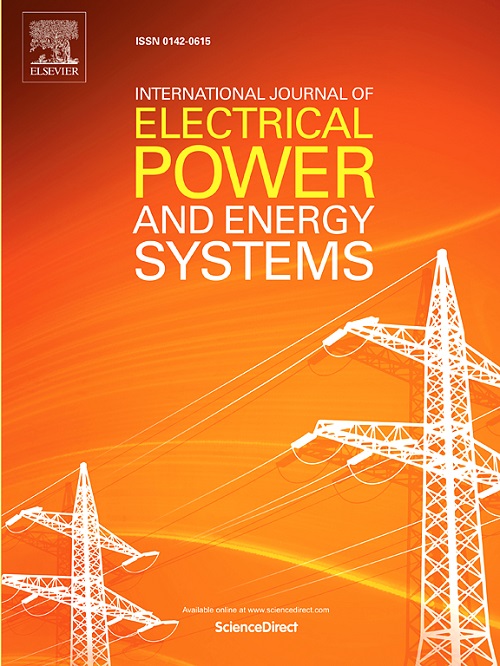需求侧深谷定价策略的博弈论方法
IF 5
2区 工程技术
Q1 ENGINEERING, ELECTRICAL & ELECTRONIC
International Journal of Electrical Power & Energy Systems
Pub Date : 2025-04-29
DOI:10.1016/j.ijepes.2025.110708
引用次数: 0
摘要
大规模可再生能源的引入必然给电力系统的安全性和稳定性带来重大挑战。为此,本文提出了基于博弈论的需求侧深谷定价(DVP)模型。首先,利用模糊C均值(FCM)进行基于模糊隶属关系的深谷周期划分。随后,我们利用贝叶斯判别法计算结果的后验概率来验证所提出的除法。该模型结合了博弈论框架,阐明了在建议的DVP定价方案中电力用户和公用事业公司之间的动态关系。此外,通过用户需求负荷的波动计算参与者的效用函数,并采用逆归纳法得到纳什均衡(NE)。最后,通过仿真结果验证了所提出的DVP定价策略的有效性,该策略可以减小负荷曲线的峰谷差,促进用户用电行为特征的形成。本文章由计算机程序翻译,如有差异,请以英文原文为准。
A Game-Theoretic approach for deep valley pricing strategy in the demand side
The introduction of large-scale renewable energy will inevitably bring significant challenges to the security and stability of power systems. Toward this end, this paper proposes a demand-side deep valley pricing (DVP) model based on game theory. First, we conduct the fuzzy affiliation-based deep valley period division by Fuzzy C Means (FCM). Subsequently, we leverage the Bayesian discriminant method to calculate the posterior probability of results to verify the proposed division method. The model incorporates a game-theoretic framework, elucidating dynamics between electric users and the utility company within the proposed DVP pricing regimen. In addition, the utility function of participators is calculated through the fluctuation of user demand load, and the Nash equilibrium (NE) is obtained using the inverse induction method. Finally, the effectiveness of the proposed DVP pricing strategy is validated by the simulation results, which can reduce the peak-to-valley difference of the load curve and promote the characteristics of users’ electricity consumption behavior.
求助全文
通过发布文献求助,成功后即可免费获取论文全文。
去求助
来源期刊
CiteScore
12.10
自引率
17.30%
发文量
1022
审稿时长
51 days
期刊介绍:
The journal covers theoretical developments in electrical power and energy systems and their applications. The coverage embraces: generation and network planning; reliability; long and short term operation; expert systems; neural networks; object oriented systems; system control centres; database and information systems; stock and parameter estimation; system security and adequacy; network theory, modelling and computation; small and large system dynamics; dynamic model identification; on-line control including load and switching control; protection; distribution systems; energy economics; impact of non-conventional systems; and man-machine interfaces.
As well as original research papers, the journal publishes short contributions, book reviews and conference reports. All papers are peer-reviewed by at least two referees.

 求助内容:
求助内容: 应助结果提醒方式:
应助结果提醒方式:


